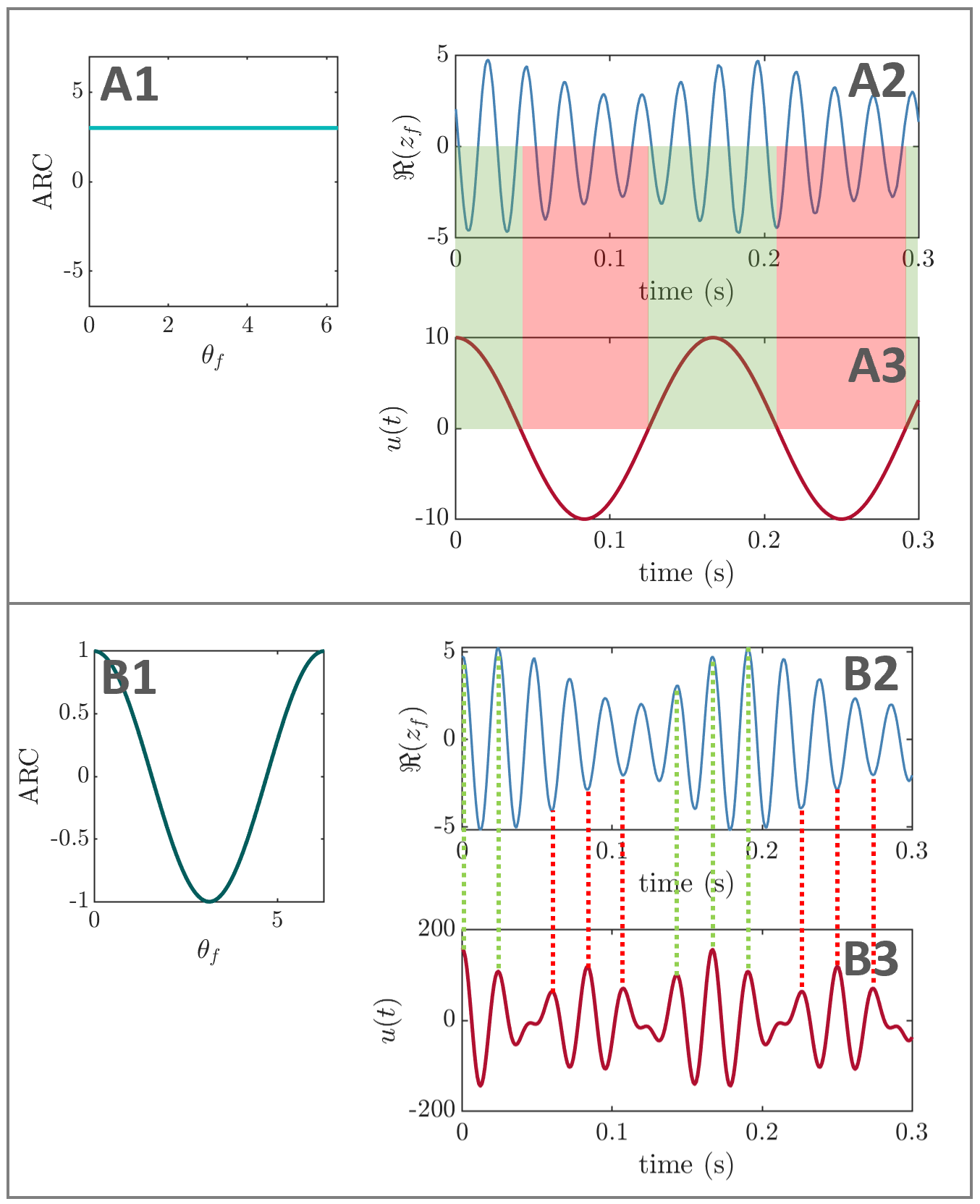How to design optimal brain stimulation to modulate phase-amplitude coupling?
Faster neural activity in our brain tends to follow patterns set by slower neural activity, which is crucial for many brain functions such as memory. However, in people with disorders such as Parkinson’s or Alzheimer’s, this coordination is disrupted. Here, we provide a theoretical framework to restore this alignment through brain stimulation. Our work sets the stage for developing new and more effective brain stimulation therapies to restore healthy patterns of brain activity.
Phase-amplitude coupling (PAC), the coupling of the amplitude of a faster brain rhythm to the phase of a slower brain rhythm, plays a significant role in brain activity and has been implicated in various neurological disorders. For example, in Parkinson's disease, PAC between the beta (13-30 Hz) and gamma (30-100 Hz) rhythms in the motor cortex is exaggerated, while in Alzheimer's disease, PAC between the theta (4-8 Hz) and gamma rhythms is diminished. Modulating PAC (i.e. reducing or enhancing PAC) using brain stimulation could therefore open new therapeutic avenues. However, while it has been previously reported that phase-locked stimulation can increase PAC, it is unclear what the optimal stimulation strategy to modulate PAC might be. Here, we provide a theoretical framework to narrow down the experimental optimisation of stimulation aimed at modulating PAC, which would otherwise rely on trial and error.We make analytical predictions using a Stuart-Landau model, and confirm these predictions in a more realistic model of coupled neural populations.Our framework specifies the critical Fourier coefficients of the stimulation waveform which should be tuned to optimally modulate PAC. Depending on the characteristics of the amplitude response curve of the fast population, these components may include the slow frequency, the fast frequency, combinations of these, as well as their harmonics. We also show that the optimal balance of energy between these Fourier components depends on the relative strength of the endogenous slow and fast rhythms, and that the alignment of fast components with the fast rhythm should change throughout the slow cycle. Furthermore, we identify the conditions requiring to phase-lock stimulation to the fast and/or slow rhythms.Together, our theoretical framework lays the foundation for guiding the development of innovative and more effective brain stimulation aimed at modulating PAC for therapeutic benefit.

2024. J Neural Eng, 21(4).
2021. eLife, 10:e67355

Electrophysiological data recorded from mouse hippocampus, showing activity dynamics important for memory.

